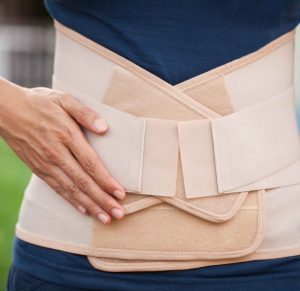Almost everyone experiences headaches. The most common are tension-type headaches, which affect 9 out of 10 adults in their lifetime.
Although this may be discouraging, especially for those who get them more often, there is good news. In most situations, you can achieve relief from tension headaches, and with an understanding of the cause, simple preventative strategies can be taken to prevent the pain from returning or even beginning.
What Causes Tension Headaches?
 A tension headache, as rightly construed by its name, is the result of stress on parts of your body such as the muscles in your neck, scalp, upper back, shoulders, and jaw.
A tension headache, as rightly construed by its name, is the result of stress on parts of your body such as the muscles in your neck, scalp, upper back, shoulders, and jaw.
The primary cause of stress in these parts is a result of poor body posture. A good standing posture should have the ears, hips, knees, and ankles, directly in line with one another so that stress-free and easy posture becomes possible.
However, if the head and the neck suddenly and continuously jerk forward against its natural posture, a significant amount of stress is leveled on the shoulders, upper back, and neck, resulting in an over strained and fragile body. Furthermore, the occipital nerve which begins from the upper neck becomes strained and eventually leads to headaches.
Aside from a bad forward head posture, there are many uncontrolled emotions like anxiety, depression, stress, and insomnia that can result in strained muscles which can ultimately make you more susceptible to headaches.
Unnecessary tension could also be created around your neck as a result of your head being in an unnatural position, like holding your head down as you look at your phone for a lengthy period or sleeping in an awkward position.
4 Natural Habits to Relieve Tension Headaches
 1. Ensure that you close your eyes while resting:
1. Ensure that you close your eyes while resting:
The occipital nerve is sensitive to reflections of light. Hence, tension headaches would be reduced when you shut your eyes while resting.
2. Gentle massaging of tensed muscles:
This could be achieved with the use of a foam massage roller. With the use of a foam massage roller, muscle strain around the neck, shoulders and upper back would be eased off.
3. Gentle application of heat to the back of the neck:
One of the home-based remedies for easing tension headache is through the gentle application of heating pad or hot damp towel to the back of the neck. However, Infrared heat has better penetrative power when used.
4. Application of natural topical pain relief cream:
The gentle use of topical pain relief creams, such as Terrafreeze™ has been proven to be a great natural solution for pain relief. In specific, Terrafreeze™ has been proven to relieve joint, neck, nerve and muscle pain. Thus, easing neck pain and stress in your upper back and shoulder area where tension headaches often originate.
7 Tips to Prevent Tension Headaches
1. Get adequate sleep:
It is essential to get the proper amount of sleep each night. Not sleeping enough makes you vulnerable to headaches. Create a calming sleep routine or use a natural sleep aid if needed, but ensure you get rest!
2. Workout regularly:
Working out release’s mood-enhancing hormones known as endorphins, which improve blood circulation and reduce stress. All these things help prevent tension headaches, which is why it is recommended to workout 3-4 times a week.
3. Drink enough water:
Headaches can be a sign of dehydration. It is essential to ensure you are drinking a sufficient amount of water for your body size to prevent headaches from dehydration. If you have not had enough water and feel a headache coming on, you should increase your water intake to ensure your body has the fluids it needs.
4. Maintain good posture:
You should be conscious of your posture at all times. While standing, you should ensure that your shoulders, knees, ears, ankles, and hips follow a straight line to the floor. When sitting your ears, shoulders and hips should follow a straight line to the floor. If remembering this is a challenge, you can make use of sticky notes or purchase a posture improving apparatus.
5. Use a back support:
 Whether it is the result of your job or daily routine, if you are sitting for long periods of time, using a back-support cushion would help relieve stress on your neck and back muscles. It’s important to make it a habit as only using it on occasion will not give you the full benefits.
Whether it is the result of your job or daily routine, if you are sitting for long periods of time, using a back-support cushion would help relieve stress on your neck and back muscles. It’s important to make it a habit as only using it on occasion will not give you the full benefits.
6. Reduce the use of pain relievers:
The overuse of pain-relieving medications can expose you to headaches and other pains. Most have adverse side effects, and it is advised to limit use to not more than twice within a week.
7. Log activities of your before getting headaches:
The essence of this headache log is to have a comprehensive review of events that expose you to a headache so that they can be avoided in the future. A guide to the record should include: what you ate, any activities you participated in 24 hours before your headache, how much you slept, and the time your headache happened.

